Snorkeling is an incredible way to explore the magnificent underwater world, and Croatia boasts some of the best snorkeling spots in Europe.
Croatia is a dream destination for avid snorkelers with its crystal-clear waters, diverse marine life, and breathtaking coastlines.
Over 6000 kilometers of captivating coastline, and more than 1200 islands, islets, and reefs make up Croatia’s diverse marine ecosystems, offering ample opportunities for snorkeling. These amazing spots offer a unique exploration experience, from vibrant coral reefs to serene underwater caves. Whether you are an experienced snorkeler or a beginner, Croatia’s mesmerizing underwater world will surely leave you with unforgettable memories.
So make sure to pack your snorkeling gear on your next visit to Croatia!
What's Inside
What to Expect: Benefits of Snorkeling in Croatia
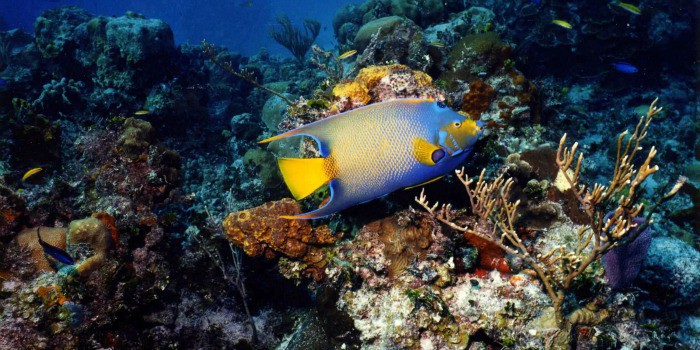
Snorkeling in Croatia is a great activity for many reasons. Here are some benefits you can expect to experience while exploring its stunning underwater world.
- Clean and clear waters
- Great underwater visibility
- Rich marine life
- Shipwrecks, underwater caves and reefs
- Safe snorkeling
- Affordable and accessible activity
- Warm Climate
- Beautiful Coastline and Islands
- Cultural Experience
1. Crystal, clean waters
While embarking on a snorkeling adventure in Croatia, you can expect to be mesmerized by the clear and clean waters that the country is renowned for. According to the European Environment Agency’s annual bathing water report, Croatia consistently ranks among the top 5 European countries, with more than 95% of its coastal bathing sites marked as excellent for water quality.
2. Great underwater visibility
The crystal-clear waters of Croatia offer excellent visibility, making it an ideal destination for snorkeling. You can observe the diverse marine life in vivid detail without any obstructions. The transparency of the Adriatic Sea along the coast extends up to 30 meters (100 ft), making it a perfect underwater spectacle. The seabed, especially in the shallow waters, is pebbled, which adds to the clarity of the water. The karst coast and the small number of rivers also contribute to the transparency. The Adriatic Sea is ideal for snorkeling, underwater fishing, and photography.
3. Diverse marine life
Despite being relatively small and semi-enclosed, the Adriatic Sea boasts a remarkably diverse array of marine life. It is home to over 7,000 plant and animal species, including over 500 endemic species. One extraordinary example is the Mediterranean feather star, which has thrived in these waters for over 500 million years. Among the animal inhabitants of the Adriatic, there are over 300 species of fish, 240 species of shellfish, 800 species of snails, and a wide variety of crustaceans, echinoderms, and other fascinating creatures.
Snorkelers can look forward to an abundance of fascinating marine life while exploring the Adriatic Sea. The underwater world offers a diverse range of wonders, from vibrant fish and graceful sea turtles to fascinating creatures like starfish, octopuses, and jellyfish. Notably, the Adriatic Sea is home to three dolphin species: the bottlenose, the striped, and the common dolphin. Among the captivating destinations to spot these dolphins is the beautiful island of Losinj. In fact, you can even adopt a dolphin in Croatia!
During your snorkeling adventure in Croatia, you may also encounter many fish species, such as sea bass, sea bream, striped bream, white seabream, john dory, sand smelt, garfish, and more. Prepare to be amazed by the captivating marine ecosystem that awaits you!
4. Shipwrecks, underwater caves, crags, reefs and corals
The Adriatic Sea is famous for its diverse marine life and intriguing shipwrecks, underwater caves, crags, and reefs. Although the total number of shipwrecks in the Croatian Adriatic Sea is unknown, Croatian diver and writer Danijel Frka has documented 75 shipwrecks, sunken fighter planes, and ancient sites in his book, “The Sunken Treasure of the Adriatic Sea.”
These shipwrecks offer a unique opportunity to explore and discover a different side of the Adriatic. One of the most popular passenger shipwrecks in Croatia, Baron Gautsch, near Rovinj, is now a popular diving site inhabited by various marine species. The Taranto ship, which sank near Dubrovnik, is now a popular wreck site inhabited by sponges, groupers, and red mullets. The seabed on the northwestern side of Vis Island is littered with ancient amphorae, evidence of Vis’s significance as a commercial hub in ancient times.
In addition to the shipwrecks, the Croatian karst rocky coast is home to many undersea caves, pits, holes, crags, rocks, and walls. Bijelac Cliff, near Lastovo, made of unique fissure and limestone rocks, is home to red gorgonians, corals, sardines, moray eels, groupers, and monkfish. Two underwater rocks and canyons, Mali and Veliki Ćutin, located on the eastern side of Cres Island, are known for their vibrant red gorgonians, rare yellow fan corals, and abundant fish species.
Croatia boasts a wealth of coral formations, primarily found along the outer shores of its islands. The largest coral reef in the Mediterranean, the endemic Mediterranean pillow coral, can be found in the Great Lake of Mljet Island at depths of 4 to 18 meters. This stunning coral reef has a captivating pink hue. For those seeking an enchanting sight, the Kampanel location on Vodnjak, the westernmost island of Hvar’s Pakleni Otok, provides an excellent opportunity to witness the splendor of beautiful gorgonian corals, even in the shallower waters.
5. Safe snorkeling
The Adriatic Sea offers a safe and enjoyable experience for snorkeling and swimming enthusiasts. Rest assured, no life-threatening creatures are lurking in these waters. Nevertheless, exercising caution and adhering to safety guidelines when engaging in any water activity is always prudent.
While occasional shark sightings in the Adriatic may be the subject of anecdotes, they pose no real threat. These magnificent mammals are exceedingly rare to encounter, and there have been no reported attacks on humans in Croatian waters.
More commonly, though still infrequently, you may encounter fireworms, spiderfish, jellyfish, and stingrays in the Adriatic. It is important to note that these creatures do not pose a direct danger to humans, but their defense mechanisms can cause discomfort and pain. Stepping on a sea urchin remains the primary concern for snorkelers in Croatia.
Rest assured, the Adriatic Sea offers a captivating underwater world for exploration, ensuring your safety and enjoyment as you immerse yourself in its wonders.
6. Affordable and accessible
Snorkeling in Croatia is not only affordable but also easily accessible for everyone. With just a mask, snorkel, and fins, you can dive into the Adriatic Sea and explore its wonders. Even if you don’t have the means to acquire the equipment, you can still snorkel in Croatia, albeit with some limitations. While your eyes may experience a slight burning sensation and your visibility may not be as clear as with a mask, you can realistically partake in this activity. Croatia offers a snorkeling experience that is open to all, inviting you to immerse yourself in the beauty of the Adriatic Sea.
Besides, equipment rental and tour prices in Croatia are reasonable, and many spots can be accessed by boat or directly from the shore. Furthermore, the country’s many islands and coastal towns provide easy access to prime snorkeling locations.
Additionally, Croatia offers a range of accommodation options suitable for any budget, from luxury hotels to cozy apartments and villas. Many tour operators also offer discounted packages that include accommodation and snorkeling activities, making it an ideal holiday option for families or solo travelers on a budget.
7. Warm climate
The Adriatic Sea’s warm climate makes it an inviting environment for underwater exploration. The average water temperature during the summer months is around 25 degrees Celsius (79°F), providing a comfortable and enjoyable snorkeling experience.
8. Beautiful Coast and Islands
Croatia’s coastline stretches almost 6000 km (including islands!), making it perfect for exploring different snorkeling spots. Each island and coastal town has its own unique charm, with hidden coves, secluded beaches, and breathtaking views.
9. Cultural experience
Snorkeling in Croatia is not just about the underwater world. The country has a rich history and culture, evident in its architecture, cuisine, and traditions. You can combine snorkeling with visits to historical sites, traditional villages, and authentic local restaurants.
The 8 Best Spots for Snorkeling in Croatia
The pristine waters of the Adriatic Sea spread through every corner of the Croatian coast, revealing a vibrant marine world that is both accessible and affordable for snorkelers. Wherever your journey takes you in Croatia, you’ll be greeted with enchanting opportunities to explore the captivating underwater world.
To help you have an unforgettable snorkeling experience in Croatia, we have carefully selected nine extraordinary spots. We have picked these locations based on their captivating marine life, awe-inspiring geological formations, and natural splendor. Additionally, we considered factors such as ease of access, well-developed tourist infrastructure, and availability of organized snorkeling tours, ensuring a seamless and immersive experience.
Here are eight of the best snorkeling spots in Croatia!
- National Park Brijuni
- Cape Kamenjak
- Hvar Island
- Makarska Riviera
- Vis Island
- Dugi Otok
- Drevnik Veli
- Mljet Island
1. National Park Brijuni
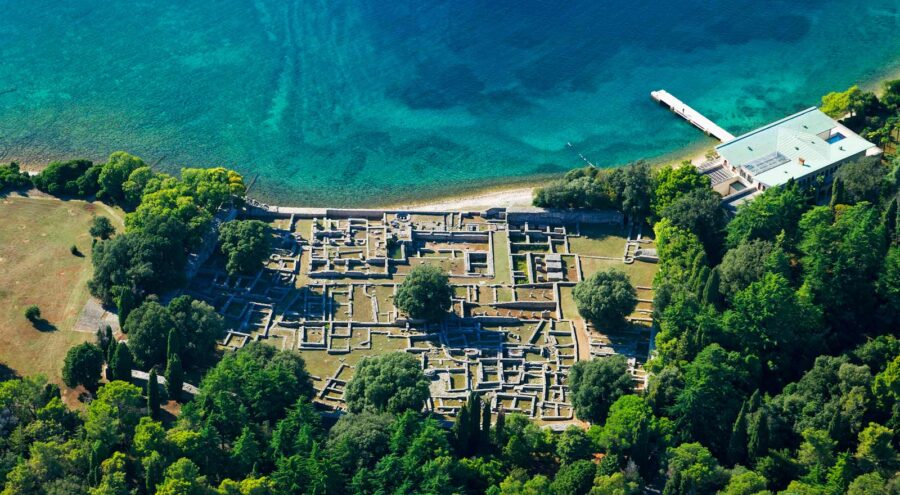
Brijuni is one of the eight Croatian national parks. It is located on Istria’s south coast. The Brijuni National Park is an archipelago consisting of several islands. We highly recommend snorkeling in Brijuni because it is one of the rare places where you can visit underwater archaeological sites on a guided tour.
Besides, since its designation as a national park in 1983, fishing in the vicinity of the Brijuni Islands has been strictly regulated. Consequently, the underwater flora and fauna in this area are remarkably well-preserved and abundant compared to elsewhere. The seabed teems with sea urchins, crustaceans, shellfish, sponges, and various fish species. Moreover, lucky observers may catch sight of the two protected species: the pen-shell and the date-shell. Keep your eyes peeled as dolphins occasionally grace the waters of Brijuni with their presence.
How to get there
Boats to Brijuni Islands depart from the village of Fazana. From June through September, boats run regularly from 9.00 am until 10.00 pm every hour.
You can arrange your own snorkeling around the island. However, if you wish to explore archaeological underwater sites in Veriga Bay, you must join an organized tour. You can obtain additional info at the NP Brijuni Website.
Plan your visit to the Brijuni Islands
Guided tour: Brijuni National Park Boat Excursion from Pula
Where to stay: Pula, Rovinj, Porec accommodation
Where to eat: Tavern Feral in Fazana or Restaurant Alla Beccaccia in Valbandon
2. Cape Kamenjak
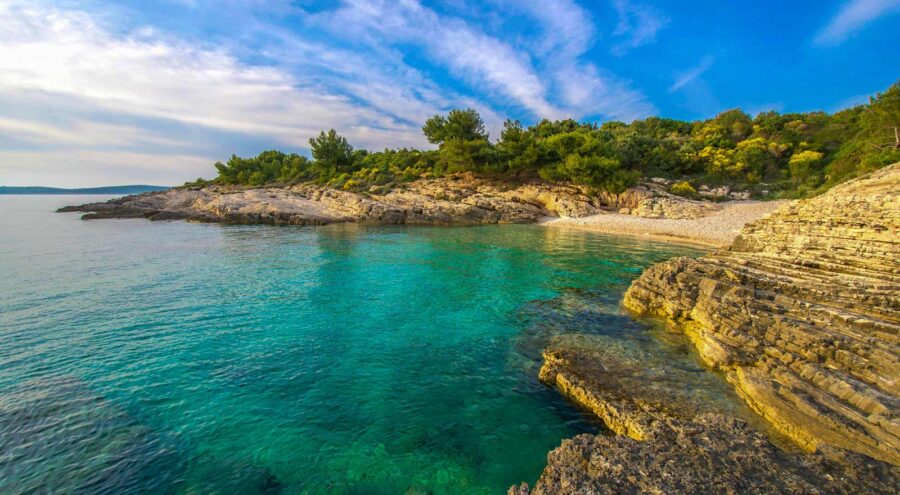
Cape Kamenjak, situated at the southernmost point of Istria near Pula, is a captivating nature park worth exploring. If you enjoy nature, long walks, cycling, and water activities like swimming, snorkeling, diving, kayaking, or windsurfing, this park is an ideal destination. The park’s entrance fee is 15€ per day for a car (persons included!)
The coastal landscape predominantly features rocky formations, with a scattering of pebble beaches boasting large, round pebbles. These shores are also home to fascinating underwater caves. These caves are home to the Mediterranean monk seal, one of the world’s most endangered mammals. If you are lucky, you might be able to spot one during your snorkeling adventure in the waters of the Cape Kamenjak.
Immerse yourself in the crystal-clear sea, exploring the abundance of underwater caves and passageways, teeming with diverse marine life.
How to get to Cape Kamenjak
From Pula, follow signs for Banjole and Premantura. When you reach the village of Premantura, take a right turn in the direction of Kamenjak. Reaching the park’s entrance takes you another 2-3 minutes.
Plan your visit to Cape Kamenjak
- Guided tour: Kamenjak Nature Park: Kayak Tour with Snorkeling and Cave Exploring
- Where to stay: Park Plaza Arena Pula and Boutique Hotel Valsabbion
- Where to eat: Tavern Batelina in Banjole
3. Hvar Island
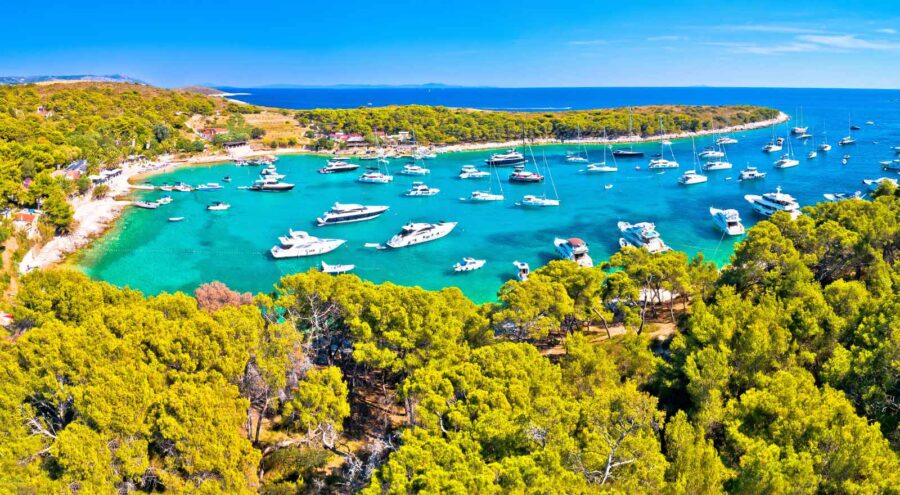
Hvar Island in Croatia is famous as a top summer destination, known for its vibrant nightlife and stunning beaches. Beyond Hvar town’s lively atmosphere, there are ample opportunities for outdoor activities, including snorkeling. The Pakleni Islands and Red Rocks are two snorkeling spots on Hvar Island that truly stand out.
The Pakleni Islands, just off the coast of Hvar Town, offer pristine beaches, hidden bays, and crystal-clear blue waters, making them one of Hvar’s most popular snorkeling destinations. Visitors can also enjoy bars, beach clubs, and fine restaurants. Notable snorkeling spots on the Pakleni Islands include Mlini Bay on Marinkovac Island and Perna Beach on Sveti Klement Island. Kampanel on Vodnjak Island is a mesmerizing diving spot with abundant red gorgonians.
Red Rocks, rugged cliffs on the southern coast of Hvar Island, are known for their deep red color and excellent snorkeling experience. The underwater landscape is adorned with sea caves, tunnels, and colorful marine life. The best way to explore Red Rocks is via a boat tour or by renting a kayak.
How to get there
You can reach Paklinski Islands by taxi boat from Hvar harbor. We suggest you get there early (10 am at the latest) if you want to take a good spot on any of the beaches. A return ticket to Pakleni Islands costs 10€. Another option is to rent a boat and spend a day cruising the islands, stopping for snorkeling and swimming breaks along the way. You can also hop on many organized kayaking and snorkeling tours from the Hvar waterfront.
The best way to reach Red Rocks is on a boat tour from Hvar Island.
Plan your visit to Hvar Island
- Popular tours: Kayaking Adventure to the Pakleni Islands, Sailboat Tour to Pakleni Islands and Red Rocks, Delfina Boat Tour to Paklinski Islands and Red Rocks
- Where to stay in Hvar: Spa Hotel Adriana and Villa Nora Hvar
- Where to ea: Laganini Lounge Bar and Fish House and Tri Grede
4. Makarska Riviera
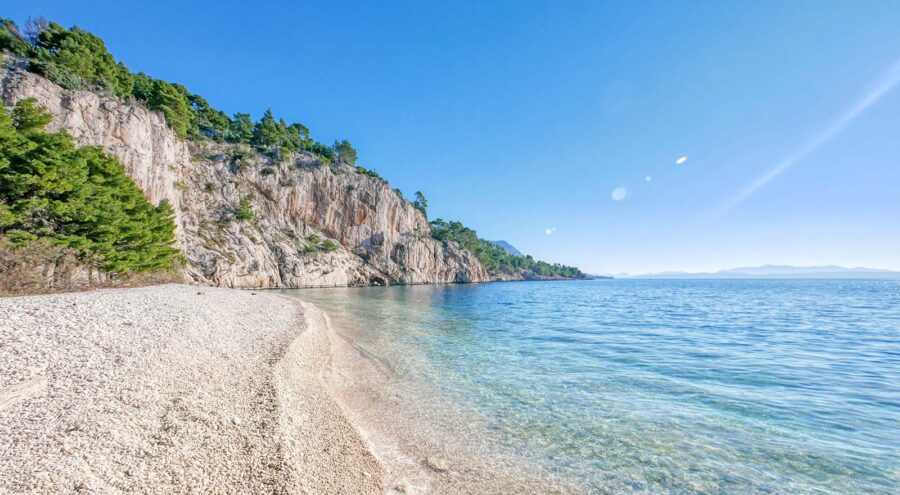
The Makarska Riviera is a must-visit for snorkeling enthusiasts. This coastal stretch spans approximately 60 km and offers numerous snorkeling spots from Brela to Gradac. With charming coastal villages, pebbly beaches, and crystal-clear turquoise seas, it’s no wonder the Makarska Riviera is popular.
To fully explore, consider renting a boat or joining a tour to access hidden beaches and coves. Nugal Beach, accessible only by boat or foot, is renowned for its pristine waters and caves. For a tranquil experience, try the wild beaches between Drasnice and Igrani. Punta Rata Beach in Brela is recognized as one of Europe’s finest beaches. Expect abundant marine life as you snorkel, including sand smelt, sardines, groupers, and more.
In addition to snorkeling, there are plenty of other activities to enjoy in the area. Consider hiking in Biokovo Nature Park or venture to nearby islands such as Hvar and Brac to enrich your experience.
How to get around
The villages along the Makarska Riviera offer excellent bus connectivity, providing convenient transportation options throughout the day. Bus travel is a hassle-free way to get around and explore the area.
For a more adventurous experience, consider renting a boat to venture into the enchanting bays and secluded beaches of the Riviera. Alternatively, renting a car allows you to uncover off-the-beaten-path beaches, unveiling the region’s true beauty.
If you’re seeking a unique and immersive experience, organized kayaking tours are available, taking you to some of the lesser-known beaches that are otherwise difficult to access.
Plan your visit to Makarska Riviera
- Snorkeling tours: Half-Day Small-Group Kayaking Tour in Makarska, Snorkeling tour Makarska Riviera
- Where to stay: Villa Paulina, Aminess Khalani Hotel
- Where to eat: Restaurant Jeny Tucepi, Restaurant Bura
5. Vis Island
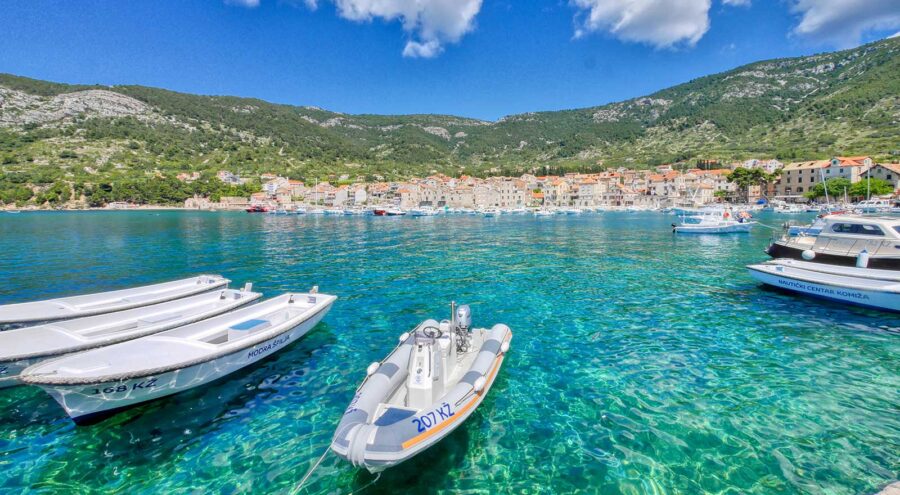
The farthest inhabited island off the Croatian mainland, Vis Island’s natural beauty, remote location, and open seas make it a perfect place to snorkel in Croatia.
The most popular snorkeling spots on Vis Island are Stiniva and Srebrna Beach, a peninsula known as Ceska Villa, waters around the Green Cave on Ravnik Island, Monk Seal Cave on Bisevo Island, and the Blue Lagoon on Budikovac Island. Vis also has old military sea tunnels that served as warship shelters. They are also interesting snorkeling spots to explore.
As an important military base from 1950 to 1989, Vis remained off-limits to foreign visitors, a limitation that contributed to the island’s remarkable preservation. Today, Vis entices tourists with its authenticity, stunning nature, delicious food, and exquisite wine.
How to get there
The easiest way to reach Vis Island is from Split by high-speed catamaran. Vis also has a direct ferry connection with Hvar. You can also book many day tours to Vis from Split and Hvar.
Plan your visit to Vis Island
- Tours: Blue Cave and 5 Islands from Split, Vis Island, and Blue Cave Speedboat Tour from Hvar
- Where to stay: Hotel San Giorgio, House Bava
- Where to eat: Tavern Senko, Roki’s, Pojoda, Pizzeria Karijola
6. Mljet Island

Mljet Island, nestled in the Mediterranean, boasts the largest coral reef in the region, making it an idyllic destination for snorkeling enthusiasts. The island is a lush oasis adorned with untouched pine forests, pristine beaches, and tranquil lakes, earning it the reputation of being the greenest island in Croatia. The crown jewel of Mljet is its expansive national park, which spans the entire northwest section of the island. As a protected natural site, the park regulates and limits all water activities, including fishing, resulting in a thriving underwater ecosystem. The crystal-clear and unpolluted sea teems with abundant marine life, including sea urchins, cucumbers, and a mesmerizing array of underwater cliffs, crags, and rocks.
Veliko Jezero (Big Lake), Rikavica, and Odysseus Caves are popular snorkeling spots on the island, brimming with an array of underwater creatures such as sponges, octopuses, scorpionfish, and an assortment of small fish, crabs, and anemones.
How to get there
Catch a ferry from Dubrovnik or Prapratno. Alternatively, book an organized boat tour to Mljet from Dubrovnik.
Plan a visit to Mljet
- Tours: Mljet National Park Day Trip from Dubrovnik, Boat Tour to Mljet National Park and Three Islands
- Where to stay: Apartments Lampalo, Guesthouse Radulj
- Where to eat: Stermasi, Franka – Traditional Dalmatian Food
7. Dugi otok

Dugi Otok is the northernmost island of the Zadar archipelago, and it’s a great destination for snorkeling enthusiasts. The island boasts numerous bays, beaches, and the beautiful Telascica Nature Park. The underwater world along the coast of Dugi Otok is teeming with life, partly because Telascica Nature Park and Kornati National Park are protected areas where fishing is strictly regulated.
There are several popular snorkeling spots on the island, including Lagnici Cliffs, located on the island’s northern part near Veli Rat lighthouse. Here, you can explore the shipwreck of Michele, which ran aground in 1983 and is now home to many fish and even some coral formations.
Another great spot is Brbiscica Cave, located on the island’s west coast. This underwater cave offers a unique snorkeling experience, with the sun’s rays creating a stunning color effect in the water. You’ll be able to spot many different fish species here.
Finally, Telascica Bay, located on the southern part of the island, is a large, natural bay characterized by high-rising cliffs on one side, pine and oak forests, 6 islets, and a number of small coves. This area is home to over 300 underwater plants and more than 250 sea creatures, making it a great place for snorkeling. In addition to small fish, crustaceans, and octopuses, you can also admire red coral and carnivorous sponges.
How to get here
Ferry boats depart a few times a day from the port of Zadar. If you travel by car, check out the Jadrolinija car ferry. You can also reach the island by G&V Line. Passenger ferry sails to Sali. Jadrolinija car ferry sails to Brbinj and catamaran sails to Bozava. The crossing takes about 1 hour and 30 minutes.
The Bookaway website provides instant bookings for ferries in Croatia.
Plan a visit to Dugi Otok
- Recommended tours: Kornati Kayaking and Cycling Day Trip From Zadar
- Where to stay: Villa Nai 3.3, Apartments Ruza Dragove, Art Hotel Kalelarga in Zadar
- Where to eat: Restaurant Sporka Mare, Katina Island, Gorgonia Grill
8. Split

Split has several great snorkeling spots in its vicinity. While Kasjuni is the top choice for snorkeling within the city, two other nearby places attract more snorkel enthusiasts. These spots are the Blue Lagoon on the island of Drvenik Veli, off the coast of Trogir, and the Necujam Bay on the island of Solta.
The Blue Lagoon is situated in a picturesque cove, surrounded by three islands: Drvenik Veli, Small Krknjasi, and Big Krknjasi. Locally, the cove is commonly referred to as Krknjasi. The crystal-clear sea in vibrant shades of blue and turquoise, along with its sandy seabed, creates an enchanting underwater world teeming with sea urchins, octopuses, small crabs, and various Adriatic fish. Tour boats departing from Split and Trogir usually spend their afternoons in the lagoon, from noon until 5 pm. Before and after these hours, the place transforms into a tranquil and almost deserted haven.
On Solta Island, the Necujam Bay is home to the shipwreck Kontesa, which has become one of Croatia’s most renowned snorkeling destinations. It’s not every day that we get the chance to snorkel around a shipwreck. Typically, shipwrecks are located in deep waters, requiring diving skills to explore. However, the Kontesa, a commercial ship that sank just over a decade ago, rests in shallow waters, making it accessible to all. Aside from the shipwreck, Necujam Bay boasts stunning natural beauty worth visiting. A man selling mojitos from his boat adds to the cool vibe of this place!
How to get there
If you’re planning to visit Split, there are several ways to get there, including by car, bus, ferry, air, and train. As the second-largest town in Croatia, Split is centrally located and serves as an important transport hub, connecting many international and local destinations.
However, if you’re planning to visit Blue Lagoon or Necujam Bay, you’ll need to plan your transportation carefully. To get to Blue Lagoon, a ferry departs four times a day from Trogir (three times a day on Sundays and public holidays) from June through September. For Solta, a ferry departs from Split to Rogac four times a day in winter and six times a day in summer. However, from Rogac, you’ll still need to arrange for a transfer to Necujam Bay.
The easiest and most convenient way to reach the islands is by joining one of the organized boat tours from Trogir or Split.
Plan your visit
- Boat tour: From Split, Blue Lagoon, Shipwreck, and Solta with Lunch and Drinks
- Where to stay: Divota Apartments, Cornaro Hotel, Franka
- Where to eat: Konoba Krknjasi, Konoba Sesula
Best Snorkeling Tours in Croatia
Snorkeling Tours in Croatia allow participants to explore the rich and diverse underwater world of Croatia’s coastline. These tours typically provide snorkeling gear and take enthusiasts to prime spots known for clear waters and abundant marine life.
The tours can range from a few hours to full-day excursions, often including refreshments or meals and integrating visits to notable coastal landmarks with scheduled snorkeling and swimming breaks.
If you are visiting central Dalmatia, particularly Split or Trogir, don’t miss the 5 Islands Boat Tour that stops for snorkeling in some of the most amazing bays and beaches, including Blue Lagoon on Budikovac Island and Pakleni Islands off the coast of Hvar. The same tour is also available from Hvar Island.
One of the most popular snorkeling tours from Split or Trogir is the Solta and Drvenik Veli islands tour that includes the opportunity to snorkel at the shipwreck Kontesa on Solta and in the turquoise waters of Blue Lagoon on Drvevnik Veli.
Visitors to Dubrovnik can embark on a boat tour to Mljet and Elafiti Islands and enjoy the mesmerizing underworld of the Odysseus Cave and Blue Cave on Kolocep Island.
Those looking to experience the best snorkeling in Pula will enjoy this Sea Cave Kayak Tour with snorkeling and swimming.
And if you are staying in Zadar, don’t miss this Full-Day Sailing Trip to Kornati. If you travel as a group, this private speedboat tour takes you on an unforgettable snorkeling adventure to hidden gems in the Kornati archipelago.
Tips For Snorkeling in Croatia
To make the most out of your snorkeling experience in Croatia, below are some tips to keep in mind.
- Choose the right time! The best time for snorkeling in Croatia is between June and September when the waters are warm, and the weather is pleasant. Avoid peak tourist season (July-August) for a more peaceful snorkeling experience.
- Join a guided tour! For beginners or those who want to explore lesser-known spots, joining a guided tour is a great option. However, exclusively snorkeling tours aren’t common in Croatia. Snorkeling is optional on other tours, like kayaking or boat tours, with scheduled snorkeling and swimming breaks.
- Bring your equipment! While many shops and stalls at beaches in Croatia sell snorkeling gear, bringing your snorkeling gear will ensure a comfortable and familiar fit. The cost of a snorkeling package (mask, snorkel, fins) in the local stores is usually around 35 €. However, we recommend that you bring your snorkeling gear if you can. Kayaking and boat tours usually provide one-size-fits-all masks, but it’s always better to have gear that fits you properly.
- Bring water shoes! Remember that most beaches in Croatia are rocky or pebbly. Therefore, water shoes are advisable for comfort and walking when entering the sea. You can easily find affordable water shoes at stands and shops along the beach, typically priced around 10 €. But buying them beforehand ensures you can select the style you prefer.
- Respect the environment! Snorkeling can have a negative impact on marine life if not done responsibly. Be mindful of your surroundings and avoid touching or damaging coral reefs and other creatures.
- Stay safe! Always snorkel with a buddy, and be aware of your surroundings. Check weather conditions before heading out and avoid strong currents or areas with poor visibility.
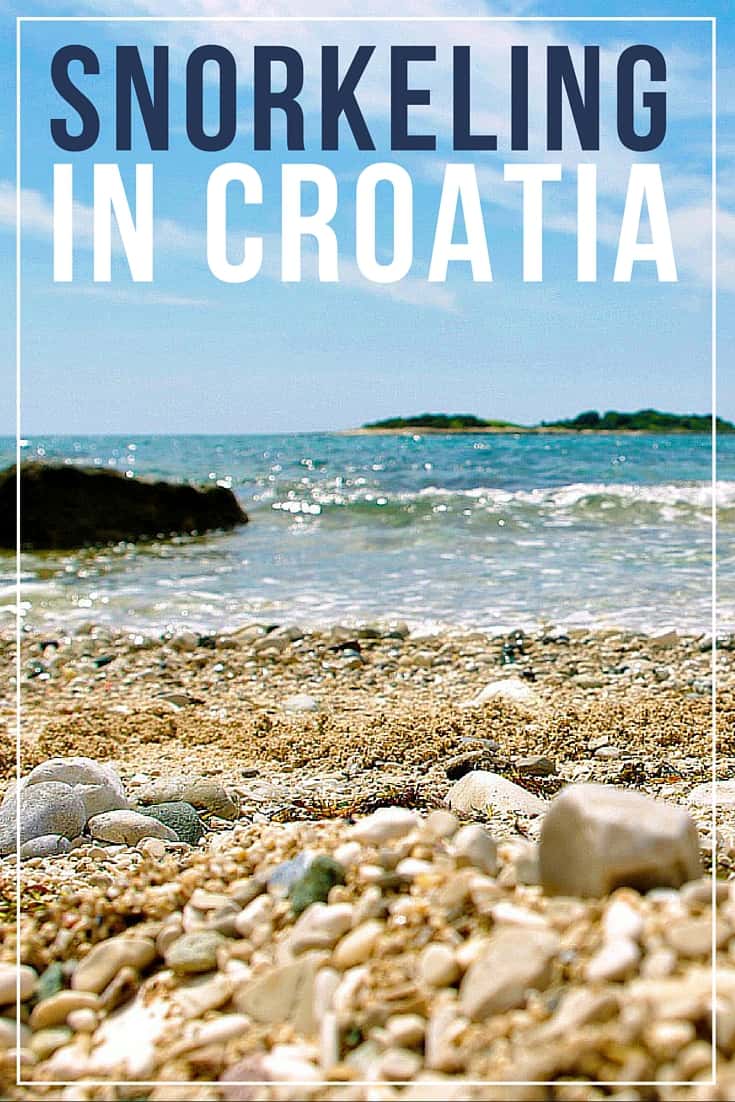
Snorkeling gear to bring to Croatia
We are not snorkeling mavens, but we love snorkeling, and we snorkel regularly. We’ve also contacted friends who love snorkeling and always travel with snorkeling gear. Here are our recommendations.
This Zeeporte Snorkel Set is a travel-size snorkeling package that comes with an anti-fog mask with a panoramic view, adjustable fins, a dry-top snorkel, and a mash bag.
Capture your underwater activities with the GoPro HERO 12. It comes in a protective waterproof case and can withstand depths up to 10 meters.
The Sandmarc Pole is an accessory that goes hand in hand with your GoPro HERO 12 camera. The pole is light-weighted, extending from 17″ to 40″. It will help you take great selfies and capture lovely underwater shots.
What do you like the most about snorkeling? Have you done any snorkeling in Croatia? Let us know in the comments below.
Further reading:
- Things To See and Do In Croatia
- 49 Awesome Beaches In Croatia (With Photos!)
- Outdoor Activities In Croatia
- Croatia Travel Guide
- Packing List For Vacation In Croatia
- A Complete Guide To Accommodation Ii Croatia
- Five Reasons I Love Croatian Beaches

I have identified liveaboard.com as a possible company that offers snorkel (not diving) 8-day cruises world-wide, including in Croatia. Do you know if there are other Company’s that offer similar cruises. Thank you from USA.
Hi,
A group of us will be staying near Zedno in August and one or two of the group would like to snorkel Where, within a short distance (preferably on the island) would you recommend please?
Many thanks
Trish
Dear Frank, we are coming to Croatia in June. we cannot go much further then Pula. are there any snorkeling sites you can recommend?
thanks for your great website
Kind Regards Monika
Just check in the village, they must have boats to rent.
Hi Liz, the sea might be cold at that time of the year. But if you don’t mind coldish sea, the snorkeling is as nice.
Hi there – great article. I have a question. I was swimming at Stiniva Bay and got bitten by some sort of fish and it really hurt! Some locals told me that it’s harmless and pain would only last a few hours. It’s been a few days and the rash is still there. I’m just curious whether you know what type of fish it is? Thanks, Sasha
I’m planning to visit in May. Would you know if May is good for snorkeling at the places you mentioned in the article? Thanks!
Thanks for such enticing recommendations, Frank, and we hope to visit this summer.
By chance, are there any wrecks or underwater archaeology that it is possible to see by snorkelling as oppose to diving?
Stewarts
hi frank!
i have read a lot of your articles and i wobder if you can help me with an info
i stay now in stobrec near podstrana and i want to rebt a small boat for 2 persons and drive by myself on remote beaches for snorkeling.
where do you recomend me to go for this rental and where is the best place for this kind of activity?
p.s.
i will need a smal boat because i di nit have a licence!
thx!
low to mid 20s
Should be in low to mid 20s degrees Celsius.
You have cover nice places, in fact there are countless places around the world.
Hi, do you know what is the average sea temperature in Makarska Riviera on september?
Hello and thank you- this is exactlythe information i was looking for.
Could you please let me know what is the average sea water temperature at this sites for snorkeling, on september?
Thanks a lot
Ravit
I’m not sure why you think there aren’t any snorkeling tours in Croatia as I have one booked for Aug 6 leaving from Split to Ciovo and Solta with a company called Daluma travel.
Hi Frank,
In 3 weeks, 2 friends and I will be visiting Zagreb and Split. We have planned for both the national parks and Brijuni islands. You say there is no where to rent snorkelling gear so I will attempt to purchase the gear here. First time in croatia, would love to snorkel and any activities involving a view of the beautiful sights and landscapes. Anything you would like to advise us on? we will be spending 2 nights in zagreb and 3 nights in split.
My husband has been trying to get me to go to Croatia, and I love to snorkel. Maybe this will be all I need to finally say yes!
Thanks, Richard! Glad to hear that I could help. Let me know if you need any additional info.
many thanks for your tips,.. we are planning a trip to the Istria region next year and I cant wait to find some snorkeling sites . Very helpful . R
Hi Malinda,
Snorkeling in Croatia you can basically do anywhere. I’ve read somewhere that Croatian Adriatic is actually one of the most transparent seas, with underwater visibility up to 56 m. We’ve listed few good snorkeling spots, but you can’t go wrong with any place you decide to stay along the coast. Nicest beaches are along Makarska Riviera, and there are many snorkeling opportunities on each and every of them. Let us know if we can help with anything else.
Thanks for a very informative site. We are planning a trip to Croatia&Slovenia and a lot of snorkeling is a high priority. Which place is best to stay so that one can have the best possible snorkeling. How easy/hard is it to try different snorkeling locations?
Thanks for stopping by, Katie! Oh, yes, GoPro is a must for underwater, especially when used with a pole. You can really reach very close to fish without scaring it.
Thanks for stopping by, Carol. Sorry for my belated response. Croatia is wonderful, I am sure you’ll enjoy it. Let us know if we can help with anything.
Thank you, I’m really glad I found your site. We’ve just experienced snorkeling for the first time around the Galapagos islands and we’re hooked! We’re hoping to have a few days in Croatia after my daughter does her SATs next May. Getting excited already!
Thank-you for the advice. I’d love to snorkel in Croatia, but think you are right about the GoPro recommendation. My Olypmus is full of water now. :(
Hi I am planning on visiting Croatia in Septmber with two friends. We re in our young twenties and want to know if the boat party your friend runs is still going on; if so could you pass on the details please? Or if you know of any other activites for us looking for some buzz spots and activites for middle weeks of september we would be very grateful. We are travelling from Split down to Dubrovnik via the islands.
Thank you!!
Hi Lesh, thanks for reading! I agree with you. Croatia is actually perfect for ship wreck diving. There are so many ship-wrecks all along the coast. As for snorkeling in Croatia, it’s nice too, just not as colorful. But like you said just being in the sea is great. We too love the sea. Wouldn’t be able to live anywhere else, but by the sea. Do you plan to visit Croatia?
Hi Frank, thanks for the tips on the pros and cons, equipment and best areas. We are lovers of the ocean and really enjoy snorkelling and diving. I know you said the marine life is not as colourful as the tropical seas but just being in the water and discovering what underneath is awesome. The beaches in Croatia look so amazing, so blue and very clear. One day we will travel there. Your photos are amazing.
Croatia has been on my list for such a long time and I still didn’t get to visit it. Thank you for this very informative post and for the gorgeous pictures. I
I don’t know if I’ll ever snorkel there, but I really enjoyed your comparison with the Caribbean. In my limited time in Croatia, I was struck by the beautiful coastline and clear waters. By the way, I like the name of your blog and its multiple meanings.
I am constantly blown away by your beautiful photos from Croatia. It was never high on my list of places I want to visit, but that has changed. Thanks for the great tips. I have yet to try snorkelling.
I have never even thought of snorkeling but after reading this post, snorkeling is one of the things I would like to learn in the near future. Croatia is endowed with great places for snorkeling.
Snorkeling isn’t one of the first things that come to mind for me when visiting Croatia. It’s great to know that it can be a good activity and I like that you pointed out the pros and cons. Love the story of the Frenchman and your neighbor. Classic!
Great post including the pros and cons of snorkeling in Croatia Frank. Although for me the story of the French Man stole the post :) I can only imagine your poor friend’s face.
Interesting, I always had the idea that snorkeling in Croatia is excellent but you make some good points about why it’s not. But at least dolphins are common! I have yet to swim with dolphins. Maybe one day in Croatia :)